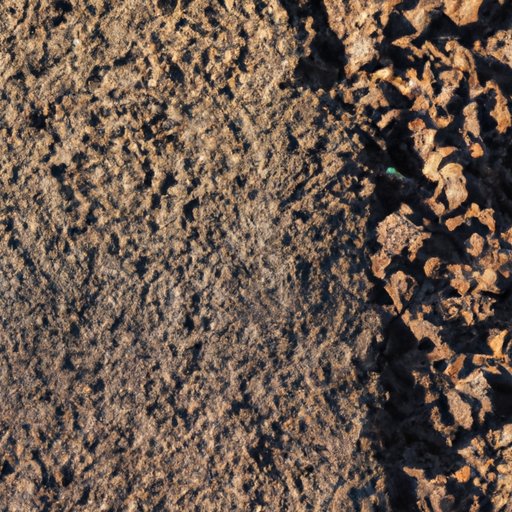Introduction
Loam soil is considered by many gardeners and farmers to be the best soil for growing plants. It is full of nutrients, has excellent water retention, and is easy to work with. If you’re looking to start a garden or simply want to improve your existing soil, then loam soil is definitely worth considering.
The purpose of this article is to provide an in-depth exploration of loam soil, from its characteristics and benefits to the science behind its ability to boost plant growth. We’ll also discuss how loam soil is used in commercial agriculture and offer tips for improving the quality of your soil at home.
Why Loam Soil is the Best Soil for Your Garden
Loam soil is a combination of three soil types – sand, silt, and clay – in roughly equal parts. This combination makes it an ideal soil for growing a wide variety of plants, as it provides the perfect balance of drainage, nutrients, and moisture retention.
Compared to other types of soil, such as pure sand or pure clay, loam soil is much easier to work with. It is crumbly and loose, making it easy to till and plant in. It also has excellent water retention, allowing plants to absorb the moisture they need without becoming waterlogged.
The benefits of using loam soil in your garden are numerous. Not only is it easier to work with, but it also promotes healthy root growth and helps to prevent soil erosion. It can also be amended to meet the specific needs of different plants or crops.
The Science Behind Loam Soil: How it Boosts Plant Growth
Loam soil gets its nutrient-rich properties from the three soil types it is comprised of – sand, silt, and clay. Sand provides good drainage and aeration, silt adds fertility, and clay helps to retain moisture. This unique combination creates a soil that is full of nutrients and provides ideal growing conditions for plants.
Additionally, the chemical composition of loam soil plays a significant role in plant growth. The soil pH level affects nutrient availability, as well as the activity of microorganisms and fungi that aid in plant growth. A pH level between 6.0 and 7.0 is considered optimal for most plants.
Studies have demonstrated the benefits of using loam soil for plant growth. For example, a study published in the Journal of Soil Science showed that loam soil provided higher yields for tomatoes than sand or clay soils. Another study found that loam soil produced significantly higher yields for lettuce compared to other soil types.
Understanding Loam Soil and Its Benefits for Agriculture
Loam soil is not only useful for home gardening, but it is also commonly used in commercial agriculture as well. Many farmers recognize the benefits of using loam soil for crop growth and yield.
Loam soil can improve crop yields in a number of ways. Its excellent drainage and water retention properties promote healthy root growth, and its nutrient-rich composition provides plants with the nutrients they need to grow and thrive. Additionally, loam soil helps to prevent soil erosion, which is essential for maintaining healthy soil for long-term crop growth.
Many successful agricultural practices have incorporated loam soil into their operations. For example, the Three Sisters planting method used by many Native American tribes uses a combination of corn, beans, and squash planted in loam soil. The corn provides a trellis for the beans to climb on, while the squash provides ground cover and helps to retain moisture in the soil.
A Beginner’s Guide to Loam Soil: What You Need to Know to Start Gardening Like a Pro
If you’re new to gardening or just starting to learn about loam soil, there are a few things you should know. First, you’ll need to be able to identify loam soil. It is typically brown or dark in color, and if you pick it up and squeeze it, it should hold its shape but also crumble easily.
Once you’ve identified your loam soil, you can take steps to improve its quality. For example, adding compost, aged manure, or other organic matter can help to add nutrients to the soil. Additionally, adding sand or perlite can help to improve drainage for plants that require more aeration.
Finally, it’s important to understand which plants thrive in loam soil. Many different types of plants can grow in loam soil, including vegetables like tomatoes, peppers, and cucumbers, as well as flowers like roses, sunflowers, and zinnias.
Conclusion
Loam soil is truly the ultimate soil for growing healthy, productive plants. Its nutrient-rich composition, excellent drainage, and water retention properties make it ideal for a wide variety of plant types. Whether you’re a seasoned gardener or just starting out, understanding the benefits of loam soil and how to work with it can help you to achieve incredible results in your garden.
